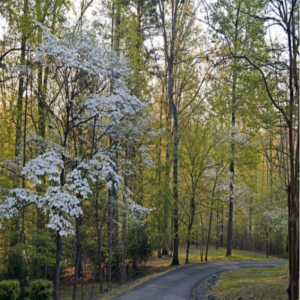The Christian Legend of the Dogwood Tree
“For the joy set before Him, He endured the cross, scorning its shame, and sat down at the right Hand of the throne of God” (Hebrews 12:2).

There is one unique area in which my knowledge of wood science and faith in Jesus intersect and that is the cross of His crucifixion at Calvary. The True Cross is the name for physical remnants to which Christ had been nailed, and on which He had died. It has clearly become the object of a special respect and worship for Christians.
According to the sacred tradition of the Eastern Orthodox Church, the True Cross was made from cedar, pine, and cypress. Another belief is that the main beam of the Cross was cedar, the transverse section was cypress, the inscription was carved on a piece of olive, and the footrest was of palm. So, in this case we have four species. Others believe that the aspen leaf trembles because the True Cross was made from that wood. There is also speculation that the True Cross was made of oak.
Whenever the subject of relics comes up, you can count on someone saying, “There are enough pieces of the True Cross to rebuild Noah’s Ark!” However, according to the National Catholic Register, the relics displayed in the Church of the Holy Sepulcher in Jerusalem and Rome’s Basilica of the Holy Cross in Jerusalem are probably authentic. It is my understanding that these relics have not been examined to determine wood species.
The dogwood tree (Cornus sp.) is a genus of between thirty and sixty plants including shrubs, evergreens, and flowering trees. Dogwoods are most common in China, Japan, and the US. They are not native to the Holy Land. The wood is very hard, but trees large enough and straight enough to provide lumber for a cross are extremely rare.
The Bible does not say what kind of wood was used for the cross. In fact, the word “cross” comes from a generic Latin term meaning a piece of wood used as a tool of execution. It’s unlikely the cross was actually made from a dogwood tree. However, as with all things concerning God – “all things are possible” (Matthew 19:26). The legend of the dogwood tree comes from a poem, author unknown, about the relationship between the tree and the cross on which Jesus was crucified:
In Jesus’ time, the dogwood grew
To a stately size and a lovely hue.
‘Twas strong and firm, its branches interwoven.
For the cross of Christ its timbers were chosen.
Seeing the distress at this use of their wood
Christ made a promise which still holds good:
“Never again shall the dogwood grow
Large enough to be used so.
Slender and twisted, it shall be
With blossoms like the cross for all to see.
As blood stains the petals marked in brown,
The blossom’s center wears a thorny crown.
All who see it will remember Me
Crucified on a cross from the dogwood tree.
Cherished and protected, this tree shall be
A reminder to all of My agony.”
Prayer: Dear God: We thank you for the blessings of life everlasting and the forgiveness of sins that we have due to the cross of Jesus. Amen.
Meet the Author
Dr. Todd Shupe is the President of Wood Science Consulting, LLC. He is a well-recognized expert on wood forensics, wood preservation, wood decay and degradation, and wood species identification. He has a broad background in new product development, quality management, and marketing and sales in both the public and private sectors. For more information please visit DrToddShupe.com.
We welcome your comments below.
Thank you for visiting. We trust that you have enjoyed reading our articles.
Liked this post? Read more below or search for more topics . . .

